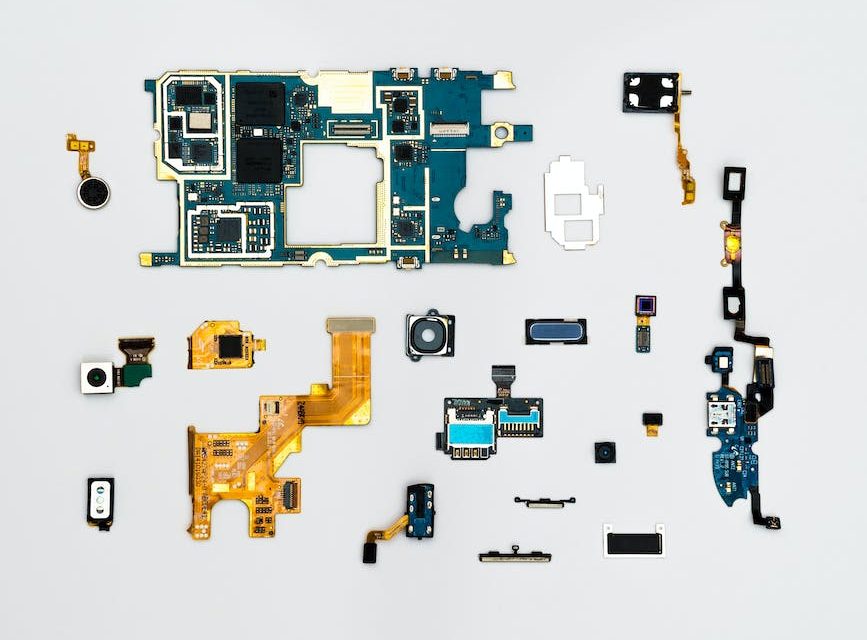Table of Contents
- Introduction
- The Role of Technology in Enhancing Communication and Collaboration among Leaders
- Leveraging Technology for Virtual Teamwork and Remote Leadership
- The Impact of Artificial Intelligence on Collaborative Decision-Making in Leadership
- Technology-Enabled Tools and Strategies for Effective Collaborative Leadership
- Q&A
- Conclusion
“Unleashing the Power of Technology for Collaborative Leadership Success”
Introduction
Technology has become an integral part of our lives, transforming the way we work, communicate, and collaborate. In the realm of leadership, technology has played a significant role in redefining the concept of collaborative leadership. This new approach to leadership leverages technological advancements to foster collaboration, enhance communication, and drive innovation within teams and organizations. In this article, we will explore how technology is reshaping the landscape of collaborative leadership and the benefits it brings to both leaders and their teams.
The Role of Technology in Enhancing Communication and Collaboration among Leaders

In today’s fast-paced and interconnected world, effective communication and collaboration are essential for successful leadership. With the rapid advancement of technology, leaders now have access to a wide range of tools and platforms that can greatly enhance their ability to communicate and collaborate with their teams. This article will explore the role of technology in redefining collaborative leadership and how it is transforming the way leaders interact and work with their teams.
One of the key ways technology is enhancing communication and collaboration among leaders is through the use of virtual communication tools. Platforms such as video conferencing, instant messaging, and project management software have made it easier than ever for leaders to connect with their teams, regardless of their physical location. This has been particularly beneficial for organizations with remote or distributed teams, as it allows leaders to maintain regular communication and foster a sense of collaboration and teamwork.
Furthermore, technology has also revolutionized the way leaders share information and collaborate on projects. Cloud-based document sharing and collaboration tools have made it possible for leaders and their teams to work on the same document simultaneously, regardless of their physical location. This not only streamlines the collaboration process but also ensures that everyone is working with the most up-to-date information, eliminating the need for multiple versions of documents and reducing the risk of miscommunication.
In addition to enhancing communication and collaboration, technology has also provided leaders with valuable data and insights that can inform their decision-making process. Through the use of analytics tools, leaders can now gather and analyze data on various aspects of their organization, such as employee performance, customer feedback, and market trends. This data-driven approach allows leaders to make more informed decisions and identify areas for improvement, ultimately leading to more effective leadership.
Moreover, technology has also facilitated the creation of online communities and networks, where leaders can connect and collaborate with their peers from around the world. These communities provide a platform for leaders to share best practices, exchange ideas, and seek advice from others who have faced similar challenges. This not only expands leaders’ knowledge and perspectives but also fosters a sense of camaraderie and support among leaders, which can be invaluable in a demanding and often isolating role.
However, it is important to note that while technology has undoubtedly revolutionized the way leaders communicate and collaborate, it is not a substitute for effective leadership skills. Technology should be seen as a tool that complements and enhances leadership, rather than replacing it. Leaders still need to possess strong interpersonal skills, such as active listening, empathy, and the ability to inspire and motivate their teams. Technology can facilitate communication and collaboration, but it is ultimately up to the leader to create a culture of trust, openness, and collaboration within their organization.
In conclusion, technology has played a significant role in redefining collaborative leadership. Through virtual communication tools, cloud-based collaboration platforms, data analytics, and online communities, leaders now have access to a wide range of tools and resources that can greatly enhance their ability to communicate, collaborate, and make informed decisions. However, it is important for leaders to remember that technology is not a substitute for effective leadership skills. By combining technology with strong interpersonal skills, leaders can truly harness the power of technology to drive collaboration, innovation, and success within their organizations.
Leveraging Technology for Virtual Teamwork and Remote Leadership
How Technology is Redefining Collaborative Leadership
In today’s fast-paced and interconnected world, technology has become an integral part of our lives. It has transformed the way we communicate, work, and collaborate. One area where technology has had a significant impact is in the realm of collaborative leadership. With the rise of virtual teamwork and remote leadership, organizations are leveraging technology to enhance collaboration and redefine what it means to be a leader.
One of the key ways technology is redefining collaborative leadership is through the use of virtual team platforms. These platforms provide a centralized hub where team members can collaborate, share information, and work together on projects, regardless of their physical location. This has allowed organizations to tap into a global talent pool and assemble teams with diverse skill sets and perspectives.
Virtual team platforms also enable real-time communication and collaboration. With features such as video conferencing, instant messaging, and file sharing, team members can connect and collaborate as if they were in the same room. This has eliminated the barriers of time and distance, making it easier for teams to work together and share ideas. It has also fostered a sense of camaraderie and teamwork, despite the physical separation.
Another way technology is redefining collaborative leadership is through the use of project management tools. These tools provide leaders with a centralized platform to plan, track, and manage projects. They allow leaders to assign tasks, set deadlines, and monitor progress in real-time. This not only enhances efficiency and productivity but also provides leaders with a holistic view of the project and enables them to make informed decisions.
Furthermore, technology has enabled leaders to have a greater level of visibility and transparency into their teams’ work. With project management tools and collaboration platforms, leaders can easily track individual and team performance, identify bottlenecks, and provide timely feedback. This has empowered leaders to be more proactive in addressing issues and supporting their teams, ultimately leading to improved outcomes.
In addition to virtual team platforms and project management tools, technology has also revolutionized the way leaders communicate and engage with their teams. Social media platforms, internal communication tools, and enterprise social networks have made it easier for leaders to connect with their teams, share updates, and foster a sense of community. This has been particularly valuable in remote leadership scenarios, where face-to-face interactions are limited.
Moreover, technology has enabled leaders to leverage data and analytics to make data-driven decisions. With the advent of big data and advanced analytics tools, leaders can now access real-time data on team performance, customer feedback, and market trends. This allows them to identify patterns, spot opportunities, and make informed decisions that drive business success. It also enables leaders to measure the impact of their leadership strategies and make adjustments as needed.
In conclusion, technology is redefining collaborative leadership by enabling virtual teamwork, enhancing communication and collaboration, providing visibility and transparency, and facilitating data-driven decision-making. As organizations continue to embrace remote work and virtual teams, leaders must adapt and leverage technology to effectively lead and inspire their teams. By embracing technology and harnessing its power, leaders can create a collaborative and inclusive work environment that drives innovation and success.
The Impact of Artificial Intelligence on Collaborative Decision-Making in Leadership
Collaborative leadership has long been recognized as an effective approach to decision-making and problem-solving in organizations. By involving multiple stakeholders and encouraging open communication, collaborative leadership fosters a sense of ownership and collective responsibility. However, with the advent of technology, particularly artificial intelligence (AI), the dynamics of collaborative decision-making are undergoing a significant transformation.
AI has the potential to revolutionize the way leaders collaborate and make decisions. One of the key impacts of AI on collaborative leadership is the ability to process vast amounts of data quickly and accurately. Traditionally, leaders relied on their own knowledge and experience, as well as input from others, to make informed decisions. However, AI can now analyze massive datasets, identify patterns, and generate insights that humans may have overlooked. This not only enhances the quality of decision-making but also enables leaders to make more data-driven and evidence-based choices.
Furthermore, AI can facilitate collaboration by providing a platform for virtual meetings and discussions. With the rise of remote work and global teams, physical distance can often hinder effective collaboration. However, AI-powered tools such as video conferencing platforms and project management software enable leaders and team members to connect and collaborate regardless of their geographical location. This not only saves time and resources but also promotes inclusivity and diversity in decision-making processes.
Another significant impact of AI on collaborative leadership is the automation of routine tasks. Leaders often find themselves bogged down by administrative and repetitive tasks, leaving them with limited time and energy for strategic decision-making. AI can take over these mundane tasks, such as scheduling meetings, organizing data, and generating reports, allowing leaders to focus on more complex and value-added activities. This not only increases productivity but also frees up leaders to engage in more meaningful collaboration with their teams.
However, it is important to note that AI is not a substitute for human judgment and intuition. While AI can provide valuable insights and streamline processes, it lacks the ability to understand complex human emotions and nuances. Collaborative leadership is built on trust, empathy, and effective communication, which are inherently human qualities. Therefore, leaders must strike a balance between leveraging AI technology and maintaining human-centric approaches to collaboration.
Moreover, the introduction of AI in collaborative decision-making raises ethical considerations. AI algorithms are trained on historical data, which may contain biases and perpetuate inequalities. If leaders rely solely on AI-generated insights, they risk reinforcing existing biases and excluding diverse perspectives. Therefore, it is crucial for leaders to critically evaluate and interpret AI-generated information, taking into account ethical considerations and ensuring fairness and inclusivity in decision-making processes.
In conclusion, the impact of AI on collaborative leadership is undeniable. From processing vast amounts of data to facilitating virtual collaboration and automating routine tasks, AI has the potential to redefine the way leaders collaborate and make decisions. However, it is essential for leaders to strike a balance between leveraging AI technology and maintaining human-centric approaches to collaboration. By doing so, leaders can harness the power of AI to enhance decision-making processes while upholding ethical considerations and promoting inclusivity in their organizations.
Technology-Enabled Tools and Strategies for Effective Collaborative Leadership
How Technology is Redefining Collaborative Leadership
Collaborative leadership has always been a crucial aspect of effective management. It involves bringing together diverse individuals and teams to work towards a common goal, fostering open communication, and encouraging the sharing of ideas and knowledge. In today’s digital age, technology has revolutionized the way we collaborate, providing us with a wide range of tools and strategies to enhance our leadership skills.
One of the key ways technology is redefining collaborative leadership is through the use of virtual collaboration tools. These tools enable teams to work together regardless of their physical location, breaking down geographical barriers and allowing for seamless communication. Platforms such as Slack, Microsoft Teams, and Google Workspace provide a centralized space for team members to share files, exchange ideas, and collaborate on projects in real-time. This not only increases efficiency but also promotes inclusivity by ensuring that everyone has a voice, regardless of their location.
Another technology-enabled strategy for effective collaborative leadership is the use of project management software. These tools allow leaders to assign tasks, set deadlines, and track progress, ensuring that everyone is on the same page and working towards the same objectives. Project management software also provides transparency, as team members can easily see the status of each task and understand how their work contributes to the overall project. This fosters a sense of accountability and encourages collaboration by making it clear how each individual’s efforts fit into the bigger picture.
In addition to virtual collaboration tools and project management software, technology has also given rise to new forms of communication that enhance collaborative leadership. Video conferencing platforms like Zoom and Microsoft Teams have become essential tools for remote teams, enabling face-to-face communication regardless of physical distance. This not only helps build stronger relationships among team members but also allows for more effective communication, as non-verbal cues and facial expressions can be easily observed. Furthermore, these platforms often include features such as screen sharing and virtual whiteboards, which facilitate brainstorming and idea generation in a collaborative setting.
Technology has also revolutionized the way leaders gather and analyze data, which is crucial for making informed decisions and driving collaboration. With the advent of big data and analytics tools, leaders can now collect and analyze vast amounts of information to gain insights into team performance, identify areas for improvement, and make data-driven decisions. This data-driven approach to leadership not only enhances collaboration by providing objective information but also allows leaders to identify patterns and trends that may not be immediately apparent. By leveraging technology to gather and analyze data, leaders can make more informed decisions that benefit the entire team.
In conclusion, technology has had a profound impact on collaborative leadership, providing leaders with a wide range of tools and strategies to enhance their effectiveness. Virtual collaboration tools, project management software, video conferencing platforms, and data analytics tools have all revolutionized the way we collaborate and communicate. By embracing these technologies, leaders can break down geographical barriers, foster inclusivity, promote transparency, and make more informed decisions. As technology continues to evolve, it is essential for leaders to stay abreast of the latest tools and strategies to ensure they are maximizing their collaborative leadership potential.
Q&A
1. How is technology redefining collaborative leadership?
Technology is redefining collaborative leadership by enabling real-time communication, remote collaboration, and access to a global talent pool.
2. What are the benefits of technology in collaborative leadership?
Technology in collaborative leadership offers increased efficiency, improved decision-making, enhanced creativity, and the ability to work across geographical boundaries.
3. How does technology facilitate remote collaboration?
Technology facilitates remote collaboration through video conferencing, project management tools, cloud-based document sharing, and virtual collaboration platforms.
4. What challenges may arise with technology in collaborative leadership?
Challenges that may arise with technology in collaborative leadership include information overload, potential for miscommunication, and the need for effective cybersecurity measures.
Conclusion
In conclusion, technology is redefining collaborative leadership by enabling more efficient communication, fostering global collaboration, promoting inclusivity, and enhancing decision-making processes. With the advent of various digital tools and platforms, leaders can now connect with their teams and stakeholders in real-time, regardless of geographical boundaries. This has led to increased productivity, innovation, and the ability to leverage diverse perspectives. Additionally, technology has made it easier for leaders to involve and engage all team members, regardless of their location or background, thus promoting inclusivity and diversity. Furthermore, the availability of data and analytics tools has empowered leaders to make more informed decisions, based on real-time insights. Overall, technology has revolutionized collaborative leadership, enabling leaders to effectively navigate the complexities of the modern business landscape and drive success.





